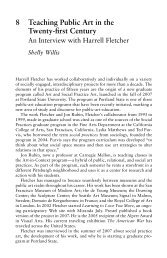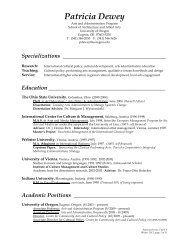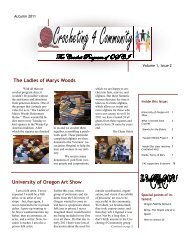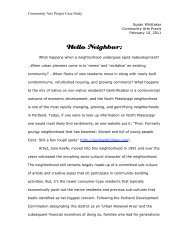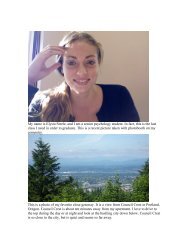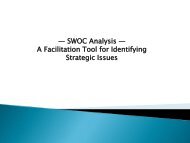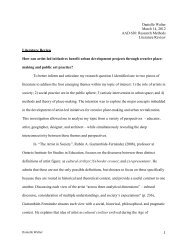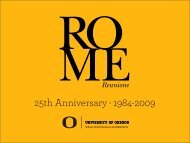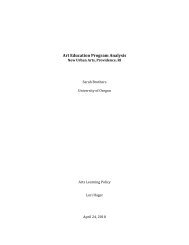Design with Nature - School of Architecture and Allied Arts Blog ...
Design with Nature - School of Architecture and Allied Arts Blog ...
Design with Nature - School of Architecture and Allied Arts Blog ...
Create successful ePaper yourself
Turn your PDF publications into a flip-book with our unique Google optimized e-Paper software.
university <strong>of</strong> Oregon – school <strong>of</strong> architecture <strong>and</strong> allied arts – department <strong>of</strong> architecture<br />
arch4/585 advanced architectural design – nancy cheng<br />
<strong>Design</strong> <strong>with</strong> <strong>Nature</strong><br />
Assignment 1<br />
due Friday Jan 11<br />
ECOSYSTEM<br />
1) Research the local eco-system <strong>and</strong> climate to underst<strong>and</strong> what plants <strong>and</strong> wildlife have<br />
historically been supported <strong>and</strong> how the l<strong>and</strong> has evolved <strong>with</strong> development. Find areas <strong>of</strong><br />
vulnerability <strong>and</strong> biggest threats.<br />
2) Identify resource <strong>and</strong> waste streams, looking for re-use opportunities in adjacent<br />
properties.<br />
ORGANISM<br />
3) Examine how one local organism thrives <strong>with</strong>in the specific microclimate to reveal<br />
useful strategies for architectural design. Select a crucial aspect <strong>of</strong> your design <strong>and</strong> think<br />
about which creature's survival is related to this.<br />
- How does it collect nutrients, take shelter, <strong>and</strong> shed waste?<br />
- How is its structure <strong>and</strong> skin adapted to the microclimate <strong>and</strong> location?<br />
4) Illustrate the natural Strategy for addressing a crucial Challenge. Use analytical<br />
diagrams to abstract deeper operational principles.<br />
Form: morphological organization<br />
Process: functional mechanisms<br />
System: interacting elements<br />
5) Draw a potential architectural application.<br />
6) Present your work on 11 x 17 horizontal sheets.<br />
READING: Gruber, Petra. Biomimetics in <strong>Architecture</strong>: architecture <strong>of</strong> life <strong>and</strong> buildings.<br />
SpringWien NA 2543 .B56 G78 2011<br />
RECOMMENDED<br />
Ask<strong>Nature</strong>.org: Searchable database <strong>of</strong> biological strategies & biomimetic designs.<br />
Ball, Philip. The Self-Made Tapestry : Pattern formation in <strong>Nature</strong>. Oxford University Press,<br />
1999. QH491 .B35 1999 video: http://www.youtube.com/watch?v=fS7kF_7QKcQ<br />
Eggermont, Marjan. Biomimicry projects by Engineering Students<br />
http://issuu.com/eggermont/docs/bio_drawing_sample<br />
Eggermont, Marjan et. al., Zygote Quarterly. http://zqjournal.org/<br />
Lienhard, Julian. Flect<strong>of</strong>in : a biologically inspired shading device http://www.itke.unistuttgart.de/flect<strong>of</strong>in/flect<strong>of</strong>in_brochure.pdf<br />
Lim, Joseph, Bio-structural analogues in architecture, Amsterdam : BIS Publishers, c2009.<br />
NA2543.B56 L55 2009<br />
Oxman, Neri. Printing 3D Buildings. http://whatsnext.blogs.cnn.com/2012/12/07/printing-<br />
3d-buildings-five-tenets-<strong>of</strong>-a-new-kind-<strong>of</strong>-architecture/?hpt=hp_c2<br />
Julian Vincent's diagram showing levels <strong>of</strong><br />
abstraction for biomimicry
Rui Felix's ideas from sketching a barrel cactus, as shown in OCAD teacher Carl Hastrich's blog<br />
http://bouncingideas.wordpress.com/2011/12/14/learning-from-a-barrel-cactus/



